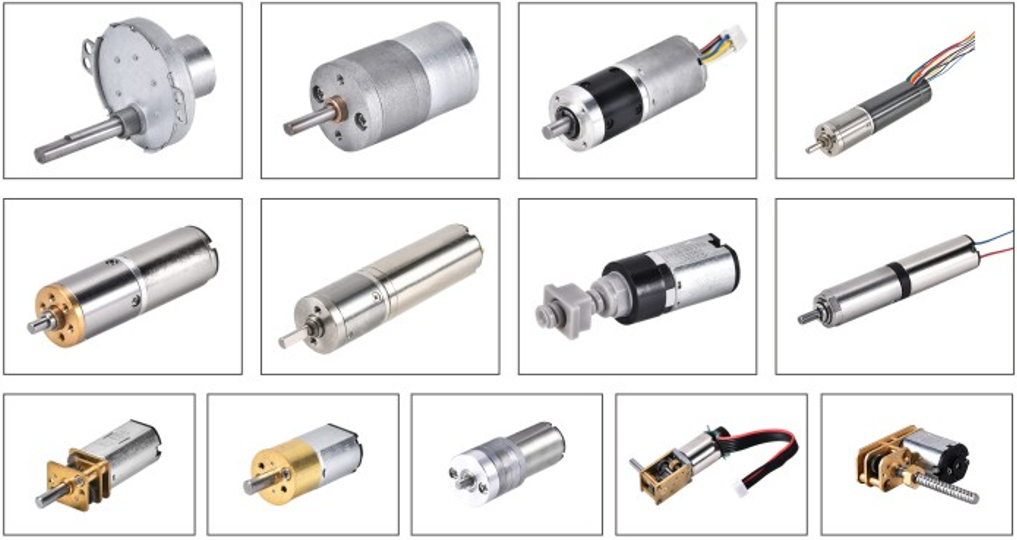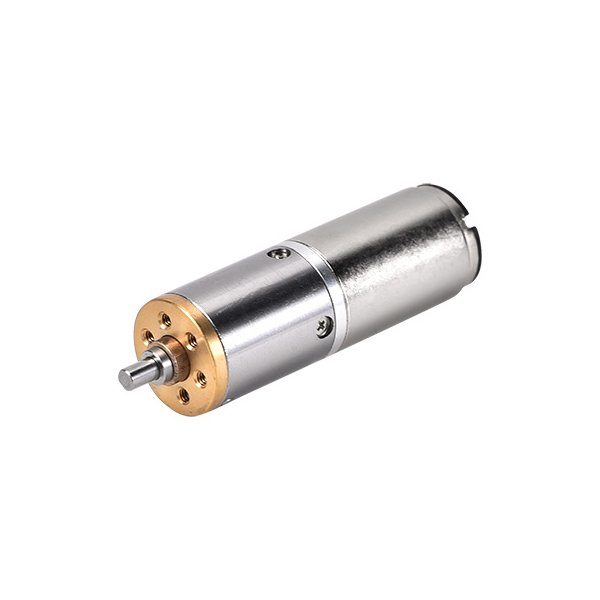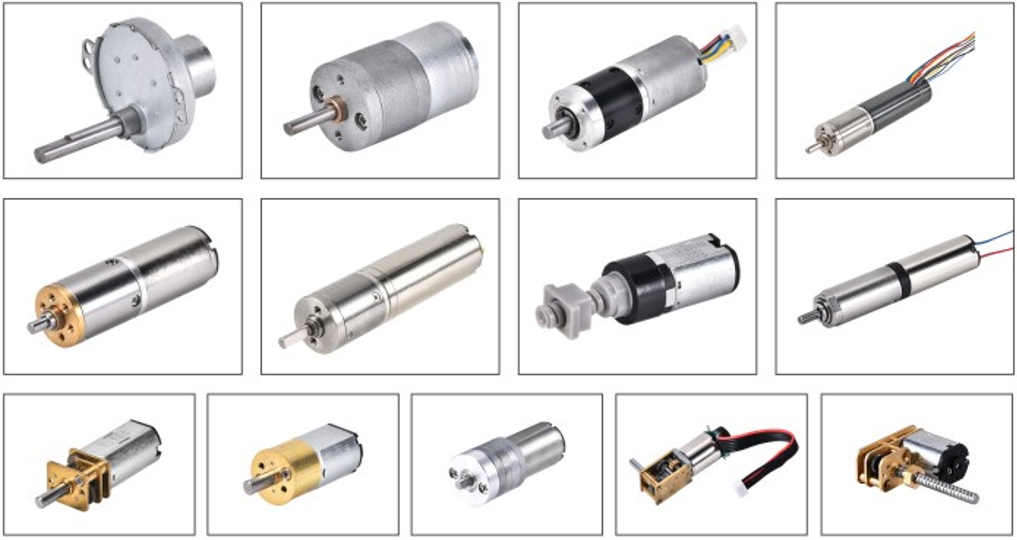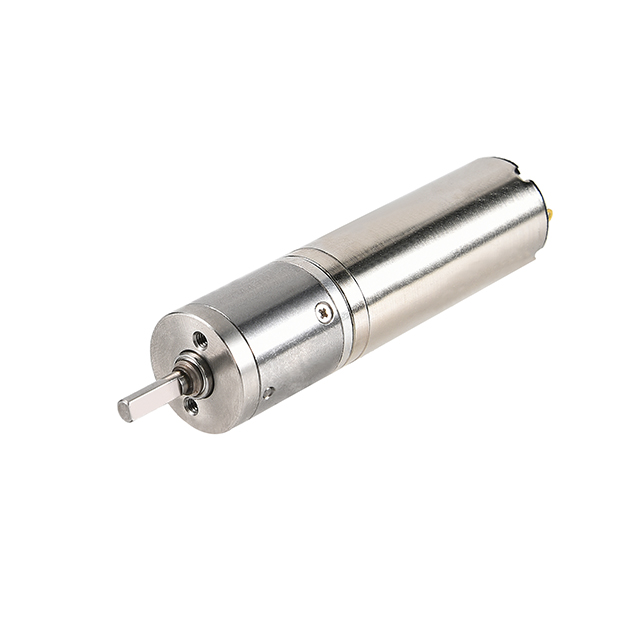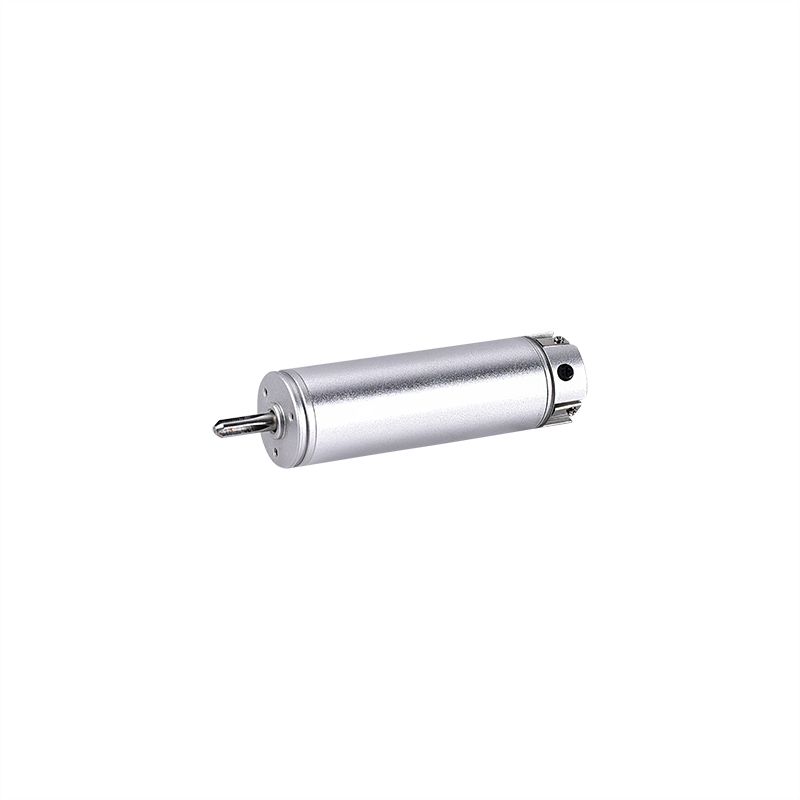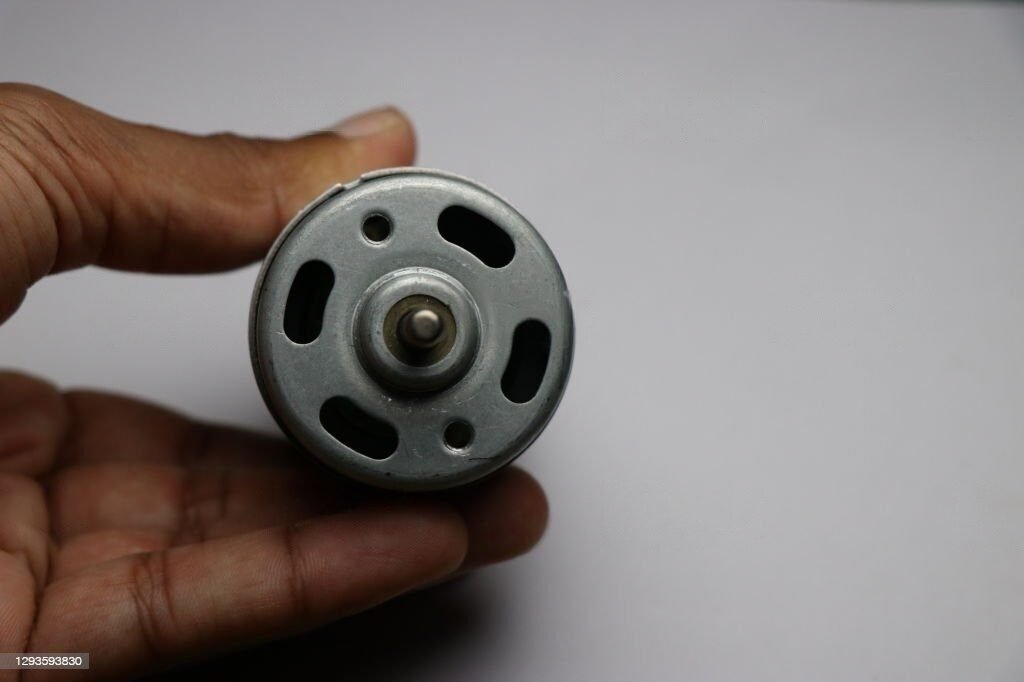Imagine a conveyor belt that moves heavy packages. It must go at the right speed. If it goes too fast, things can fall. If it goes too slow, work stops. Gear reduction motors help control this speed. These motors use gears to change speed. They also give more torque when needed. More people want small and efficient motors now. This is important in robotics and healthcare. New gear making and smart tech help motors work better. Now, motors can change speed more exactly. This helps modern machines do their jobs well.
Key Takeaways
Gear reduction motors make machines slower but stronger. They help machines lift heavy things and work better.
There are different gear reducers for different jobs. Some are worm, planetary, helical, and cycloidal. Each type is good for certain needs like noise, power, or how well it works.
These motors are used in many places like factories, robots, homes, and elevators. They help save energy and make machines easier to control.
Gear reduction gives more power and better speed control. It also saves energy. But it can make machines bigger, heavier, and need more care.
Picking the right gear ratio and reducer type is important. It helps machines work well, last longer, and do their jobs right.
1. How Gear Reduction Motors Work
Working Principle
Gear reduction motors use a simple idea. They connect a motor to a gear reducer. The gear reducer has gears inside. These gears change how the motor works. When the motor turns the input shaft, the gears slow down the speed. At the same time, they make the output torque stronger. This helps machines move heavy things at the right speed.
Engineers pick gear reduction motors for jobs needing high torque and low speed. Conveyor belts, elevators, and robots use this system. The gear reducer lets the motor lift heavier loads. It also helps the motor last longer and not get too hot.
Here is how it works:
The motor gives power to the input shaft.
The input shaft turns the first gear in the gear reducer.
The gears inside change the speed and torque.
The output shaft sends the final torque and speed to the machine.
Designers use motor curves and current limits to choose the right gear ratio. They add safety factors to make sure the motor and gear reducer work well together. Most gear reduction motors are 75-90% efficient. Engineers plan for some energy loss.
Speed and Torque
The gears inside the gear reducer change speed and torque. The gear ratio is very important. It is the number of teeth on the output gear divided by the input gear. A higher gear ratio means the speed goes down and the torque goes up.
Concept | Explanation |
|---|---|
Gear Ratio | Ratio of teeth on output gear to input gear |
Speed Relationship | Output speed = Input speed / Gear ratio |
Torque Relationship | Output torque = Input torque × Gear ratio |
Mechanical Advantage | Gear ratio gives mechanical advantage |
Speed Reducer | More teeth on output gear means lower speed, higher torque |
Gear reduction helps control machines better. It lets machines move at the right speed for the job. The gear reducer also makes sure the torque fits the load. This keeps the motor safe and running well. Speed reduction and more torque help gear reduction motors power many machines with accuracy.
2. Types of Gear Reducer
Gear reducers come in different designs. Each type is good for certain jobs. Knowing the main types helps engineers pick the best one.
Worm
A worm gear reducer has a screw-shaped gear called a worm. The worm turns a wheel with teeth. This setup makes the gears turn at a right angle. It can slow things down a lot, from 10:1 to 60:1. Worm gear reducers are small and can lock themselves. This means they stop things from moving backward. They are used in conveyors, lifts, and packaging machines. These jobs need safety and careful control. Worm gear reducers are not very efficient. The gears slide against each other. This makes heat and causes wear.
Planetary
Planetary gear reducers have a sun gear in the middle. Planet gears go around it inside a ring gear. This makes a small gearbox with straight shafts. Planetary gear reducers give a lot of torque in a small space. They are very efficient, often above 97%. They have low backlash. This makes them great for robots and motion control. They also work well in servo drives. Planetary gearboxes can take shock loads. They have high power for their size. But they are more complex. This can make them cost more and need more care.
Helical
Helical gear reducers use gears with slanted teeth. This makes them run smoothly and quietly. They are efficient and give a lot of torque. You see them in factories, mining, and automation. The slanted teeth help lower noise and shaking. This is good for places that need quiet machines. Helical gearboxes can also handle shock loads better than many others.
Cycloidal
Cycloidal gear reducers use a rolling motion, not sliding. The gear has a disc that moves in a special way. This stops backlash and lowers wear. Cycloidal gear reducers give a lot of torque and protect against overload. They are small, strong, and quiet. These reducers are great for tough jobs. They are used in robots, conveyors, and food processing. They work well when you need a lot of torque and accuracy.
Tip: The table below shows the main features and uses for each gear reducer type.
Gear Reducer Type | Efficiency | Torque Capacity | Noise Level | Typical Applications |
|---|---|---|---|---|
Worm | Low | High | Moderate | Conveyors, lifts, packaging |
Planetary | Very high | Very high | Low | Robotics, motion control, machinery |
Helical | Good | High | Low | Manufacturing, mining, automation |
Cycloidal | Medium to low | Exceptional | Low | Robotics, conveyors, food processing |
3. Applications of Gear Reduction Motors
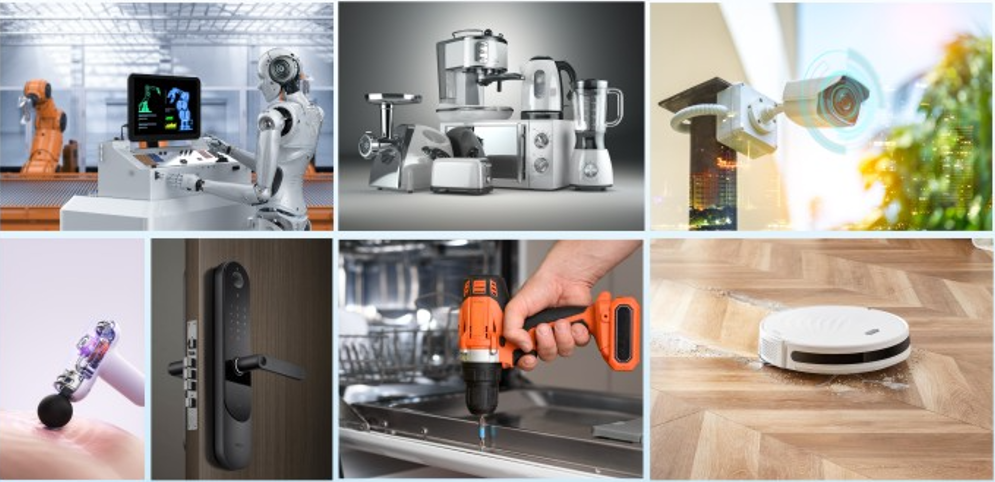
Gear reduction motors are very important in many fields. They help control speed and give more torque. This makes them useful for many jobs. Here are the main places where these motors work well.
Industrial
Factories need gear reduction motors for their machines. They use them in moving, packing, and building things. These motors help conveyor belts move at the right speed. They also give enough torque to lift heavy things. In car factories, these motors help control speed and torque. This makes work more accurate and reliable. Food and drink factories use these motors to save energy. They are easy to take care of. The table below shows why different jobs use gear reduction motors:
Industry Sector | Primary Reasons for Adoption |
|---|---|
Material Handling | Small size, easy to fix, strong for hard work |
Automotive Assembly | Exact speed and torque, steady power |
Food and Beverage Processing | Saves energy, easy to set up, better control |
Industrial Automation & Robotics | Exact speed and torque, small size, saves energy |
Packaging | Saves space, easy to fix, exact speed |
Gear reduction motors help conveyor belts use less energy. They match the speed to the job. This saves power and money. These motors also help machines last longer by lowering stress and heat.
Robotics
Robots need gear reduction motors to move just right. Robotic arms use these motors to move to the right spot every time. Gear reduction gives more torque and slows down the speed. This helps robots do careful work or lift heavy things. Some robot arms use special gear systems for high accuracy. In factories, robots with these motors build cars and work on airplane parts. They also help make medicine. These motors help robots work with tiny details and make fewer mistakes.
Robotic arms in factories use gear reduction motors for smooth moves.
Moving robots use planetary gearboxes for strong turning and steering.
Surgery robots use gear reduction to copy hand moves exactly.
Home and Commercial
Gear reduction motors are in many home and business machines. Washing machines, garage doors, and food choppers use these motors. They help control speed and give the right torque. In stores and offices, escalators and elevators use these motors for safe rides. Air systems use them to change fan speed and save energy. These motors help machines run quietly and last longer. They also need less fixing.
Home machines use gear reduction motors for quiet, steady work.
Buildings use them in elevators and escalators for safe, smooth rides.
Office tools like printers use gear reduction for exact moves.
Gear reduction motors are used in many ways. They give the right speed and torque for each job. Their many uses and good performance make them important in factories, robots, and daily machines.
4. Gear Reduction: Pros and Cons
Advantages
Gear reduction gives machines many good things. Here are the main ones:
Higher Torque Output: A gear reducer makes the motor’s torque stronger. This lets a small motor move heavy things. For example, a 5:1 gear ratio makes torque five times bigger. This helps lift or push things more easily.
Precise Speed Control: Gear reduction makes the output slower. This helps machines run at the right speed for each job. Engineers can set the speed for robots and conveyors.
Energy Efficiency: Using a gear reducer means the motor uses less power for the same torque. This saves energy and makes less heat. Machines can work longer and use less electricity.
Compact Design: Many gear reducers put the motor and gears together. This saves space and makes it easier to set up.
Improved Control: Gear reduction lowers the load inertia for the motor. This makes the system easier to control and work better.
Note: Gear reduction motors help factories, robots, and home devices by giving more torque, better speed control, and saving energy.
Advantage | Explanation |
|---|---|
Torque Multiplication | Gear reducer makes more torque at low speed for heavy loads. |
Speed Reduction | Gear reduction lets you control speed for many jobs. |
Energy Savings | Less power is needed for the same torque, so it saves energy. |
Compactness | Putting the gear reducer and motor together saves space. |
Limitations
Gear reduction also has some problems engineers must think about:
Increased Size and Weight: Adding a gear reducer makes the machine bigger and heavier. This is not good for small or light machines.
Mechanical Complexity: More gears and parts mean more things can break or wear out. Gear reducers need to be checked and fixed often.
Efficiency Losses: Some power is lost as heat and friction inside the gear reducer. Not all the motor’s power gets to the output shaft.
Inertia Effects: High gear ratios make the system’s inertia go up. This can make the machine react slower to changes.
Backlash and Precision: Some gear reducers have backlash, which is a small space between gears. This can make robots or CNC machines less accurate.
Limitation | Explanation |
|---|---|
Size and Weight | Gear reducer makes the system bigger and heavier. |
Maintenance | More gears mean more things to check and fix. |
Efficiency Loss | Friction and heat in the gear reducer lower total power. |
Inertia | High gear ratios make inertia higher and slow the system. |
Backlash | Gaps between gears can make some machines less exact. |
Engineers must think about the good and bad sides of torque and speed control, size, efficiency, and fixing when picking a gear reducer.
5. Gear Ratio and Selection Tips
Choosing the Right Gear Ratio
Picking the right gear ratio is very important. It helps match speed and torque to what the machine needs. The gear ratio tells how much the gear reducer slows down the input speed. It also shows how much it increases the output torque. If the gear ratio is higher, the output speed gets lower. At the same time, the output torque gets higher. This helps engineers make machines that move heavy things or need exact speeds.
The table below shows how gear ratio, input speed, and output torque are connected:
Parameter | Formula / Relationship | Explanation / Example |
|---|---|---|
Gear Ratio (i) | i = z_OUT / z_IN = r_OUT / r_IN | Ratio of output gear teeth or radius to input gear teeth or radius. Example: i = 24/16 = 1.5 |
Output Torque | Tq_OUT = i × Tq_IN | Output torque is input torque multiplied by gear ratio. Example: 375 Nm = 1.5 × 250 Nm |
Output Speed | ω_OUT = ω_IN / i | Output speed is input speed divided by gear ratio. Example: 1000 rpm = 1500 rpm / 1.5 |
Engineers can change the number of teeth on the driven gear. This can give more torque or slow down the speed. For example, if you make the driven gear teeth go from 30 to 45, the output torque goes up by 50%. But the output speed goes down.
Key Selection Criteria
When picking a gear reducer, engineers look at many things:
Torque Requirements: The gear reducer must give enough torque for the job.
Reduction Ratio: The gear ratio must fit the speed and torque you want.
Gear Reducer Assembly Type: Shaft direction (coaxial, parallel, orthogonal) changes how it fits and works.
Gearbox Efficiency: Efficiency affects how much power is used and how much heat is made.
Backlash: Low backlash is needed for good control.
Load Handling Capability: The gear must hold both axial and radial loads.
Size Constraints: The reducer must fit in the space you have.
Application Needs: Think about speed, torque, noise, fixing, cost, and where it will be used.
Criteria / Factor | Explanation / Importance |
|---|---|
Torque Requirements | Gear reducers increase motor torque; manufacturers specify min/max torque. |
Reduction Ratio | Determines output speed from motor speed; must match application needs. |
Gear Reducer Assembly Type | Shaft orientation affects fit and function. |
Gearbox Efficiency | Impacts performance and energy consumption. |
Backlash | Affects precision; low backlash preferred for accuracy. |
Load Handling Capability | Must support axial and radial loads. |
Size Constraints | Physical dimensions must fit machinery design. |
Application Needs | Includes speed, torque, noise, maintenance, cost, and environment considerations. |
The place where the gear reducer is used matters too. High heat can make lubricants weaker and cause more wear. Humidity, dust, and chemicals may mean you need sealed covers or special coatings to keep the gear and motor safe.
Practical Tips
To get the best results and make the gear reducer last longer, experts suggest these tips:
Pick a gear reducer that matches the speed, torque, and how often it will run.
Do regular checks, like changing the lubricant and making sure it is mounted right.
Choose gear types that work well to lower heat and wear.
Use the right control method so the gear reducer does not get shocked.
Think about things like heat, humidity, and dust.
Check and change the lubricant when needed.
Do not forget about the environment, gear ratio, or real-world tests.
Use tools like torque calculators and ask the manufacturer for help.
Doing regular checks, keeping things lined up, and making sure cooling paths are open will help the gear reducer and motor last longer.
If you follow these tips and know how gear ratio works, you can pick the right gear reducer for any job. This makes sure you get the right power, speed, and a long life for your machine.
Here are five things to keep in mind when picking gear reduction motors:
Figure out how much torque and speed each job needs.
Try to keep backlash low for better accuracy and longer use.
Pick a gear ratio that gives good performance.
Use strong materials if the place is tough or rough.
Make sure the motor works well to save money and stop overheating.
Looking at product details, reading expert tips, and using online tools can help you choose the right motor. Knowing the basics about gear reduction helps you make better choices, keeps machines working longer, and means less time fixing them in any field.
FAQ
What is the main benefit of using a gear reduction motor?
Gear reduction motors make more torque and slow down speed. This helps machines lift heavy things with smaller motors. Many companies use these motors for better control and to save energy.
How often should someone maintain a gear reduction motor?
Most experts say to check the oil and alignment twice a year. Doing regular checks stops damage and helps the motor last longer.
Can gear reduction motors run in both directions?
Yes, most gear reduction motors can go forward and backward. The way the gear reducer and motor are built lets them move both ways in many machines.
What industries use gear reduction motors the most?
Factories, robots, packaging, and home machines use these motors a lot. These motors help control how fast and strong machines work in many jobs.
Tip: Always read the manufacturer’s manual for the right way to care for and use your motor.
